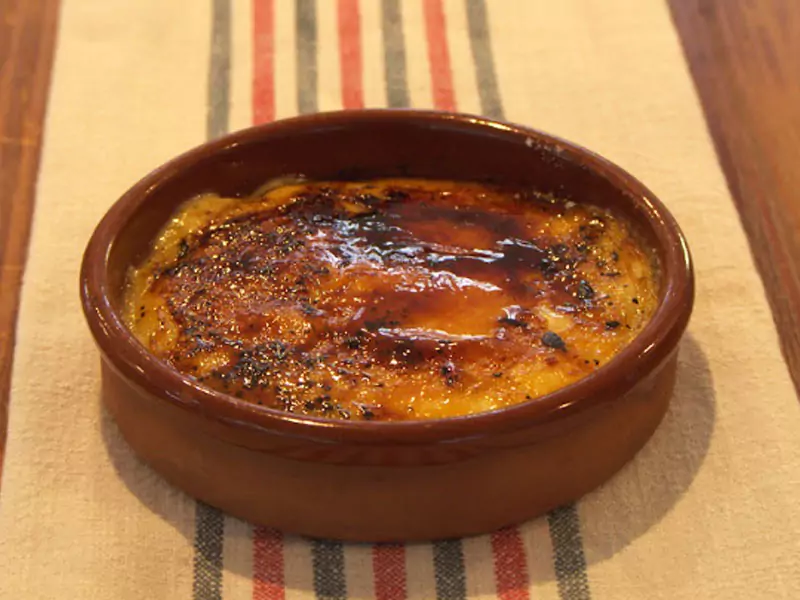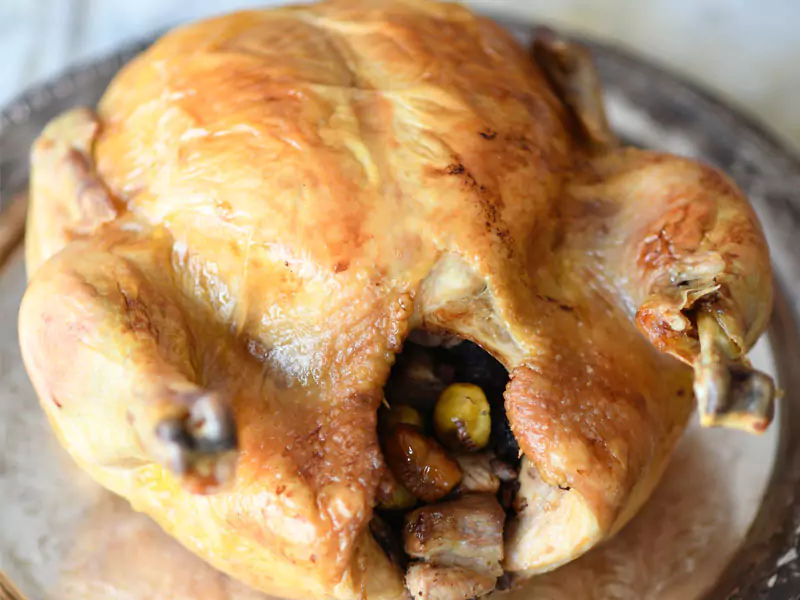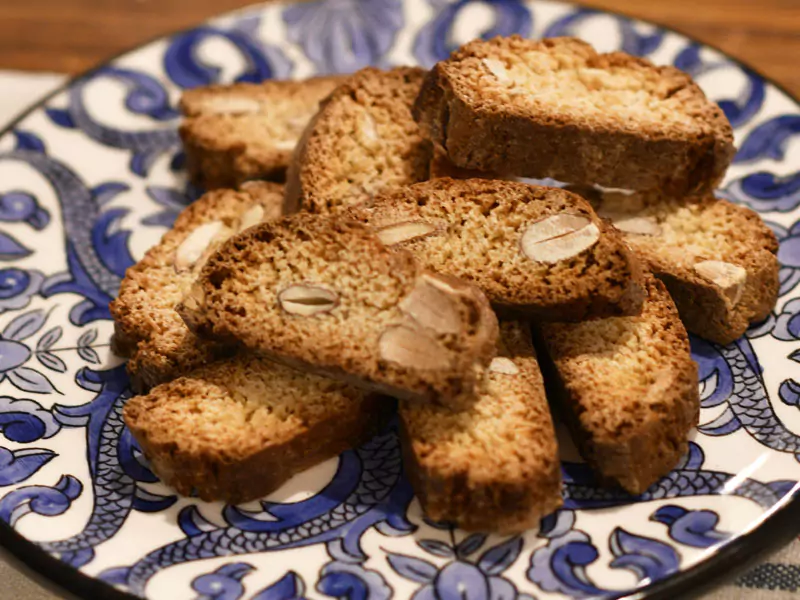St. Josep’s Crema Catalana
Exactly when this treat emerged in Catalonia remains unknown, but the Catalan- language’s great fourteenth-century recipe book, Llibre de totes maneres de potatges (Book on Potages of All Kinds), already included a recipe for lluixell, or cooked milk with egg. Lluixell was prepared with two parts goat milk and one part beaten egg, which would be boiled then cooled as many times as needed for the milk to thicken. The recipe recommended using a new copper pot or cauldron.
In the eighteenth and nineteenth centuries, crema catalana—made from sugar, milk, and eggs—was only available to the highest classes on certain holidays. This dessert would be served with melindros and sprinkled with sugar and cinnamon.
Crema catalana eventually became a staple at family meals and holidays, especially on Saint Joseph’s Day, which lent this dessert its current name. Its scrumptious sugar and cinnamon topping would be burned with a hot, cast-iron salamander, creating a crispy upper crust.
The secret to a good crema lies in the combination of quality milk, fresh eggs, and very low heat—not to mention the constant stirring. Many recipes similar to crema catalana can be found around the world, but it takes on its most festive, popular flare in Catalonia.
TRADITIONS:
EL DIA DEL PADRE, O SANT JOSEP
Saint Joseph, Jesus’s father, was somewhat overlooked in Western ecclesiastic history up until the thirteenth century, when Dia de Sant Josep, or Saint Joseph’s Day, became a holiday. In Catalonia, however, Joseph is and always has been a favorite patron. Alongside Sant Joan (Saint John) and Sant Jordi (Saint George), Josep stands among the most popular saints.
On March 19th, Saint Joseph’s Day, fathers are celebrated throughout Catalonia, and it’s customary to prepare homemade crema catalana for dessert.
This tradition came about as a way of observing the breaking of the Lenten fast, coinciding with a time of year when cows and sheep give abundant milk while eggs pile up at home due to the fast. Crema and mató cheese became two major dessert staples for Dia de Sant Josep.



